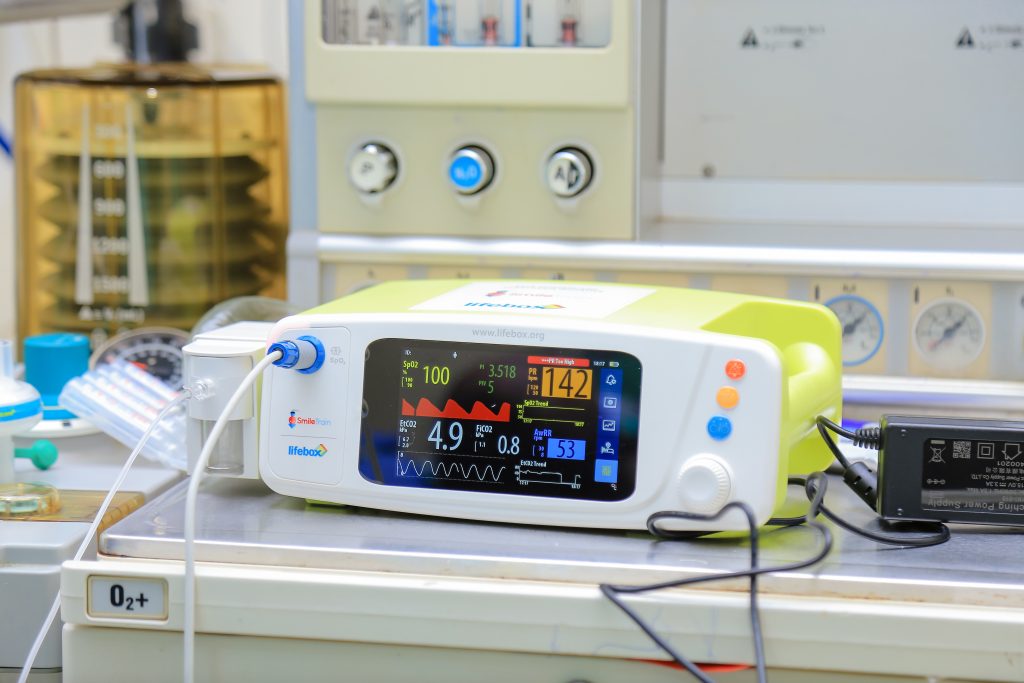
No patient is more important than the next
Dr. Othin on why capnography should be used for every surgery
 Dr. Moses Othin is a pediatric cardiac anesthesiologist and pediatric cardiac intensivist at the Uganda Heart Institute. As a cardiac anesthesiologist, Dr. Moses routinely uses capnography in his work. However, only 15% of operating rooms in Uganda have available capnography. Here Dr. Othin explains the impact of capnography on the safety of surgery and why he wants every operating room in Uganda to be equipped with capnography.
Dr. Moses Othin is a pediatric cardiac anesthesiologist and pediatric cardiac intensivist at the Uganda Heart Institute. As a cardiac anesthesiologist, Dr. Moses routinely uses capnography in his work. However, only 15% of operating rooms in Uganda have available capnography. Here Dr. Othin explains the impact of capnography on the safety of surgery and why he wants every operating room in Uganda to be equipped with capnography.
“My name is Dr. Moses Othin and I am a double trained, pediatric cardiac anesthesiologist and pediatric cardiac intensivist, attached to the Uganda Heart Institute. The Heart Institute conducts an average of one hundred closed heart surgeries in a year and over sixty open heart surgeries. These are just a scratch on the surface because heart surgeries are expensive and can only be done based on the availability of funds and equipment. Most times, these conditions are progressive and the more the patient is put on hold, the more other symptoms appear and need to be managed.
When I started out, capnography was a luxury as most monitors did not have a capnography module. This basically meant that we had to use other means to monitor our patients during surgery. Unlike adults, children are smaller in size and quite delicate. Bear in mind that most of our training experience is done with adult patients, making children such a unique group to work with. We often had to use stethoscopes to monitor their lungs and had to keep moving the stethoscope around their chest and stomach areas to be sure of what we were listening to. This would make me so uncomfortable because as an anesthesia provider, I have the critical role of making sure that my patient makes it out of the theater alive and this was not a certain way of doing it.
Capnography came in and made my work easy, it was a serious game changer for me. Capnography is the graphical measure of carbon dioxide in exhaled breath at any given time and creates a balance against pulse oximeters that help us monitor oxygen levels for patients. Using capnography made me certain about my work, it made me sure that I am doing the right thing and helped me detect esophageal intubation early. It has helped me in other situations like detecting cardiac arrest and when doing Cardiopulmonary Resuscitation (CPR). Capnography has helped to reduce the time taken when conducting anesthesia. I no longer have to confirm with almost everyone in the theater that the patient is breathing because it is right there on the monitor, and we can all confirm the readings.
I cannot imagine having to work without capnography at any point of my work anymore. Capnography helps me with making sure that I monitor my patient continuously. This even makes decision making easier for me as an anesthesia provider. It has made surgery safer. I cannot imagine going back to working without capnography. I know that there are surgeries that can be conducted without capnography and people do not understand the risk of this until a wrong decision is made and it affects a patient’s life or the outcome of a surgery. If I had my way, I would make sure that capnography is used for every surgery as this standardizes procedures and ensures patient safety, because no patient is more important than the next and we should not have to choose which patient will have capnography during surgery and which one won’t. That is why initiatives like the Smile Train-Lifebox Initiative are welcome because they provide opportunities for training anesthesia providers about capnography and provide equipment to help improve patient safety during surgery. The dream is to have capnography used in each and every theater in Uganda!”
Smile Train and Lifebox have donated 56 Smile Train-Lifebox Capnographs for distribution throughout Uganda in partnership with the Association of Anesthesiologists of Uganda. This is part of work driving improved access to capnography worldwide.

©Lifebox/Muhwezi Davis. Donated Smile Train-Lifebox Capnograph at CoRSU Rehabilitation Hospital, Uganda.

